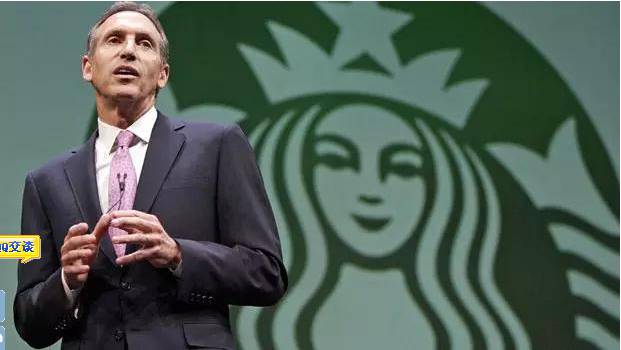Starbucks'"chief digital officer" digital business strategy is as important as selling coffee
Starbucks was one of the first brands to set up a "chief digital officer", and for the company, digital business strategy is as important as selling coffee.
By 2015, consulting firm Gartner predicts that 25 per cent of companies will have chief digital officers (Chief Digital Officer, hereinafter referred to as CDO). In fact, this is a natural development in the organizational structure of the enterprise: 70 per cent of the CMO surveyed said they had established the position of chief marketing technician in the company to report to the CMO.
The birth of CDO is inseparable from the reasons why digital technology is becoming more and more important in consumers' lives, as well as the pressure from senior executives-CMO and CIO have more and more overlap and ambiguity in innovation and accountability because of technical reasons.
On the one hand, consumers want enterprises to provide seamless digital experience, on the other hand, CMO and CIO of enterprises realize that they need technical and strategic talents who can meet the common needs of both sides. The status of CDO is growing day by day.
Beyond the four walls
For a long time, Starbucks coffee shop chain has been favored by many urban consumers, because it not only provides coffee, but also the "third space" of a lifestyle, coffee has been given new added value by Starbucks.
Now, the $13.3 billion company is going to create a "fourth space" that combines physical retail with digital channels.
Starbucks' embrace of digital can be traced back to the return of Howard Schultz in 2008. When the Starbucks founder came out again as CEO of the company, consumer behavior had changed dramatically, and they were looking forward to a seamless online and offline experience.
Schultz keenly predicted that the biggest change of this era was the impact of digital media on people's living conditions, and he realized that the characteristics of this era must be quickly integrated into Starbucks products and services. Since then, he has made many important decisions: to clarify the background of Starbucks' time and reposition its role in it. He persisted in investing in IT infrastructure, investing in Square Technology, and appointed a "chief digital officer" to personally bring Starbucks into the new digital era within the enterprise.
The reason why Starbucks is so eager to move to digital is simple-Starbucks goes wherever consumers are.
"We have to make a difference not only within these four walls of Starbucks stores, but also on mobile platforms and social media. When delivering the Starbucks experience to customers, not just in our Starbucks physical space, we want to extend it to social media and digital space, including mobile platforms. " Howard Schultz, chairman, president and CEO of Starbucks Coffee, said in an interview with successful Marketing.
Mobile and member first
Adam Brotman was the first CDO of Starbucks, who was in charge of a team of about 110 people. What are the specific responsibilities of the C-prefix manager?
He is responsible for the entire core digital business of Starbucks, including global digital marketing, websites, mobile terminals, social media, Starbucks Card, customer loyalty programs, e-commerce, Wi-Fi, Starbucks Digital Network (Starbucks Digital Network), and emerging in-store digital and entertainment technologies.
Before the job was created, Starbucks' digital marketing, Starbucks card business (Starbucks Card and mobile payments) and customer loyalty program were three independently operated divisions. But in fact, these three are the same thing, when a clear vision of the digital strategy, the combination of the three, there are new surprises between each other.
Since the establishment of CDO in 2012, the team's work has mainly focused on mobile payment and customer loyalty programs: launching App with payment and booking functions, developing mobile payment methods other than official App, adjusting membership systems and membership projects, integrating membership cards and mobile platforms, and so on.
When Starbucks first launched its first mobile app in 2009, no one expected it to become the most active retail company on the mobile Internet today. In 2011, App integrated the mobile payment function. After logging in to the account through the membership card number, users can not only query all personal account information, but also directly complete the recharge service for the membership card. When spending at a Starbucks store, the payment can be completed by directly scanning the QR code of the member account in the mobile app at the cashier.
Mobile payments using mobile phones can save Starbucks waiters a lot of credit card swiping time and transaction fees. According to statistics, mobile payment takes an average of only 6 seconds, which is nearly 2 seconds less time than swiping credit card transactions over the counter. Making payments faster is extremely important for the retail industry, not only to prevent customers from losing patience in long queues and giving up shopping, but also to drive sales of more products. In fact, Starbucks customers are indeed willing to spend a little more when using mobile payments, because the speed of mobile payments often leads to additional shopping impulses. "A lot of people don't take their wallets with them when they go out, but few people go out without their cell phones." "our goal is to maintain the growth of existing models while expanding the digital touch points that communicate with customers," said AdamBrotman, Starbucks' global chief digital officer.
More than 14% of Starbucks store transactions in the United States have been done through mobile terminals. Today, Starbucks is not only the largest retail company for mobile payments in the United States, but also the most popular food company on social media such as Facebook, Twitter, Pinterest and so on. The brand has more than 34 million likes on Facebook and more than 3.6 million followers on Twitter. In China, Starbucks already has 2 million fans on Weibo and Wechat.
At the Starbucks shareholder meeting earlier this year, Brotman promised shareholders: "if you are already impressed, I assure you, this is just the beginning." We have an active 'channel' that constantly outputs digital and mobile innovation. "
How to choose?

With the rapid development of digital technology, how does the team led by CDO choose which areas to study and what innovative digital products or services should be launched?
According to Brotman, the team will first choose areas that connect and interact with consumers, such as mobile and social platforms to pay and place orders, and the team will see what new gadgets are available in these areas and see if they can be combined with the Starbucks experience. First think about whether it is possible, and then go back to think about how to make the most amazing and novel. The starting point is by no means "well, let's see how to subvert and transform".
After identifying the domain, inspiration comes from three main sources: 1) regular brainstorming between the CDO and CIO (Chief Information Officer) teams (quarterly, irregularly) to look for new opportunities to create novel experiences for consumers and partners. 2) from outside the digital team, communicate with store managers to understand how they interact with consumers and partners, and what technologies can help them reduce friction; 3) directly from Howard Schultz and the company leadership team, there is a consensus at the top that decisions are made continuously in the context of innovation and consumer technology.
Once you have decided what to do, how to implement it? From the perspective of enterprise structure, in the past, at Starbucks, a digital technology project was completed through different centers, for example, one team was responsible for project management, one team was responsible for implementation, and different special team experts were used to develop a product. Now, with an emphasis on collaboration and innovation, the company has set up a "Tiger teams" (originally a group of computer geeks hired to try to break into a computer system to test its security), or "SWAT special team", sent to complete certain projects or achieve set goals. From the initial project establishment, brainstorming to implementation, all the links are completed by this small group. This model is more common among small start-ups than multi-billion-dollar multinationals.
Before the restructuring (that is, the establishment of a chief digital officer to manage Starbucks card business, customer loyalty program and digital marketing), the IT division, while cooperating with the company's digital business, was not as strategic as it is now, said Curt Garner, chief information officer of Starbucks. In the consumer's digital world, whether it is design experience, strategy or execution, everything is discussed, decided and completed by the two departments, no matter which position, there is a strategic consensus. All this makes the interior more efficient.
Digitization is a marathon.
As early as 2009, Starbucks defined digitization. For the company, digitization is not just a website or a point-of-sale system, but the ability to connect with consumers and subvert their experiences to drive business growth.
Back when Starbucks was developing the free Wi-Fi project, it created a dynamic and interesting Wi-Fi login page called Starbucks Digital Network (Starbucks Digital Network). Through the free Wi-Fi network, customers can read paid content such as the Wall Street Journal (blog, Weibo), the New York Times, the Economist and watch ESPN games through the free Starbucks store. It then partnered with Yahoo to link to a variety of free e-books, news, music and movies on the welcome home page of its digital network, and with Apple so that customers could enjoy free music downloads available only to Starbucks digital networks on iTunes.
Whether it's the Starbucks digital network, mobile payments, or social marketing strategies, they are creating a larger digital vision that allows Starbucks to build unprecedented relationships with its customers. This will be the fate of the traditional industry in the Internet era, and Starbucks is a typical pioneer.
"We realize that the company should consider long-term development. It sounds simple, but it's not a sprint, it's a marathon. " Schultz stressed.
[related links]
Vision of the Chinese market
China will become the main development market of Starbucks, and we have established a solid foundation for greater development in the future.
We will continue to innovate and change, but at the same time we have to be who we really are: we don't franchise our stores because it's not us; we still take care of our partners; we don't change the coffee recipe-our coffee is the same as the coffee made in the United States for more than 40 years. In short, I believe that Chinese customers want a pure Starbucks experience, but at the same time close to and integrate local culture. It's more artistic and scientific, and that's what we can do. At the same time, we will continue to devote ourselves to digital innovation and build closer emotional connections with our customers through social media and digital space.
American society is moving towards cashless transactions, and it is believed that this trend will also spread to other countries. We believe that China has unique national conditions, but the general trend is similar, just like our investment in Square, we must maintain this sensitivity in mobile technology and keep pace with the times in digital technology.
And most importantly, we need to learn from Internet companies.
(source: V-MARKETING successful Marketing author: Xie Yuan)
Important Notice :
前街咖啡 FrontStreet Coffee has moved to new addredd:
FrontStreet Coffee Address: 315,Donghua East Road,GuangZhou
Tel:020 38364473
- Prev

"Coffee decaf" A cup of decaffeinated coffee
Coffee is one of the three biggest drinks in the world, and it is loved by many people. The most distinctive ingredient in coffee is caffeine, but not everyone likes it. In terms of taste, it is the main source of bitterness of coffee; functionally, it is a nerve stimulant that can keep people in a state of excitement and affect sleep. In addition to caffeine, coffee contains thousands of ingredients, which can form unique
- Next

Starbucks of Japan develops new technology to raise cattle with coffee grounds to produce milk organic food.
According to a report in the Taiwan Xing Bao on May 25, Starbucks in Japan has developed the latest fermentation technology, using coffee grounds to raise cattle and produce milk. Starbucks in Japan recently partnered with contact lens company Menicon to successfully develop the latest lactic acid fermentation technology to convert coffee grounds into dairy feed. The quality of its milk is excellent, which makes it very popular with Starbucks in Japan.
Related
- What is the standard process for the purpose of coffee cup testing? What is the difference between hand-brewed coffee and cup testing?
- How to use hand-brewed coffee paragon small golden balls? How does cold coffee lock in the aroma of coffee?
- Is American coffee black? What is the difference between American coffee and drip coffee?
- Unexpected! Well-known tea beverage brand Lele Tea will withdraw from the Zhengzhou market!
- Starbucks enters the fashion and beauty industry?! Netizen: Give me an ice American eye cream
- Why can American refills for free? The difference between Americano and American drip pot coffee
- Being chased out of the rain in front of Starbucks?! Store: Sheltering from rain under umbrellas poses a safety hazard
- The white moonlight has changed?! Lucky launches "Big Winter Pear American"
- Hand-brewed coffee three-stage method, high-sweet and universal brewing method to share! What does the high sweet water level of hand-brewed coffee mean?
- What is the difference between raw, refined and full espresso coffee? How to extract espresso and taste good?

